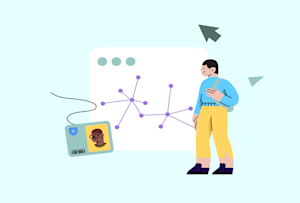10 Eye-Opening Facts About Chronic Diseases That Will Change How You See Health
Introduction
Chronic diseases—like diabetes, heart disease, cancer, and respiratory conditions—are among the leading causes of death and disability worldwide. These long-term illnesses impact not just individuals but entire families and communities, creating ripple effects across economies and healthcare systems. Understanding chronic diseases and their significance is essential for a healthier, more proactive society.
Let’s dive into the history, daily impacts, key facts, and why tackling chronic diseases is crucial for our collective future.
What Are Chronic Diseases?
Chronic diseases are medical conditions that last a year or more, require ongoing medical attention, and often affect daily life. Examples include:
- Cardiovascular diseases (e.g., heart attacks and strokes)
- Cancer
- Chronic respiratory diseases (e.g., asthma, COPD)
- Diabetes
- Arthritis
Unlike acute illnesses, which are sudden and short-lived, chronic diseases develop over time, often as a result of lifestyle, genetics, or environmental factors.
1. History
- Ancient Evidence: diseases like arthritis have been found in ancient human remains, showing they’ve existed for millennia.
- Modern Epidemics: The 20th century saw a rise in chronic diseases due to lifestyle changes, such as sedentary habits and processed foods.
- Global Focus: Organizations like the WHO and CDC began prioritizing chronic disease prevention in the 21st century, recognizing their global impact.
2. Daily Life Impacts
It affect every aspect of life, including:
- Physical Health: Persistent symptoms like pain, fatigue, and mobility issues can limit daily activities.
- Mental Health: Living with a chronic condition can lead to anxiety, depression, and stress.
- Financial Strain: Ongoing medical expenses, including medications and treatments, create financial burdens for families.
- Work and Productivity: diseases often result in missed workdays and reduced productivity.
- Relationships: Caregiving responsibilities can strain personal relationships and social interactions.
3. Eye-Opening Facts Diseases
- Global Impact: diseases cause 74% of deaths worldwide, according to the WHO.
- Preventable Risks: Many chronic conditions are linked to preventable factors like smoking, poor diet, and inactivity.
- Economic Burden: The U.S. spends over $3.7 trillion annually on chronic disease management.
- Silent Killers: Conditions like hypertension often have no symptoms until they become severe.
- Lifestyle Influence: Regular exercise and a balanced diet can reduce the risk of chronic diseases by up to 80%.
- Age Factor: While aging increases risk, chronic diseases are also rising among younger populations.
- Gender Disparities: Women are more likely to suffer from chronic pain conditions, while men face higher risks for heart disease.
- Mental Health Link: diseases and mental health conditions often co-occur, creating a cycle of poor health.
- Technological Solutions: Wearable health tech and AI are helping to monitor and manage chronic conditions more effectively.
- Community Impact: Families and caregivers often experience secondary stress due to chronic illness in loved ones.
4. FAQs
Q1: What are the most common causes of diseases?
A: Unhealthy lifestyle choices, genetic predisposition, environmental exposure, and aging are key contributors.
Q2: Can diseases be cured?
A: Most chronic diseases cannot be cured but can be managed effectively with lifestyle changes, medications, and ongoing care.
Q3: Are diseases preventable?
A: Yes, many chronic diseases can be prevented by avoiding smoking, maintaining a healthy diet, exercising regularly, and managing stress.
5. The Significance of Awareness
Raising awareness about diseases is crucial for several reasons:
- Prevention: Educating people about risk factors can reduce the prevalence of these conditions.
- Early Detection: Awareness campaigns encourage regular check-ups and screenings.
- Reducing Stigma: Open discussions can help normalize living with chronic illnesses and foster support.
- Policy Changes: Awareness drives can influence government policies on healthcare funding and research priorities.
6. Observance and Awareness Days
Several international days focus on diseases, including:
- World Heart Day (September 29): Promotes cardiovascular health.
- World Diabetes Day (November 14): Highlights diabetes prevention and management.
- World Cancer Day (February 4): Raises awareness about cancer detection and treatment.
- Arthritis Awareness Month (May): Focuses on living well with arthritis.
7. Key Points to Remember
- These are long-term conditions that impact physical, mental, and social well-being.
- They are the leading cause of death and disability globally.
- Many diseases are preventable with healthy lifestyle choices.
- Early detection and effective management can improve quality of life and reduce healthcare costs.
- Awareness and education are critical for reducing the burden of chronic diseases on society.
8. Why It Matter to Society
It affect everyone—directly or indirectly. Addressing these illnesses is essential for:
- Improving Quality of Life: Better management and prevention can significantly enhance daily living for millions.
- Reducing Healthcare Costs: Preventing diseases alleviates strain on healthcare systems.
- Building Healthier Communities: Supporting healthy lifestyles benefits individuals, families, and future generations.
Conclusion
These are more than medical conditions—they’re societal challenges that require a collective effort to address. By focusing on prevention, early detection, and personalized care, we can build a healthier, more resilient world.
Let’s make health a priority and work toward a future where chronic diseases no longer dominate our lives.











Good day! I know this is kind of off topic but I was wondering which blog platform are you using for this site? I’m getting tired of WordPress because I’ve had problems with hackers and I’m looking at alternatives for another platform. I would be fantastic if you could point me in the direction of a good platform.
I am glad to be one of the visitors on this outstanding site (:, thanks for putting up.